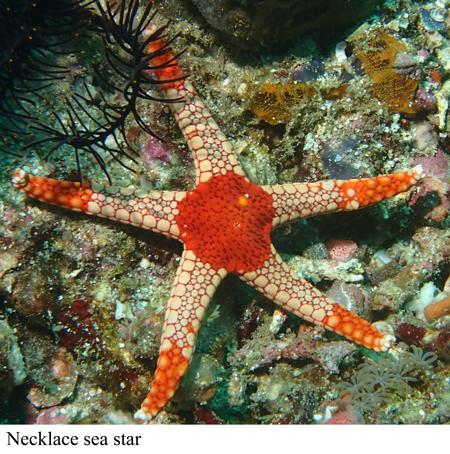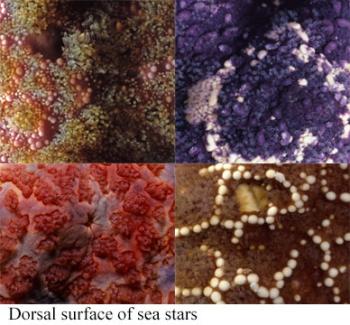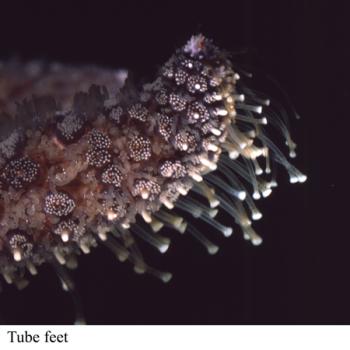
Imagine a creature with such a radically different body plan that we, bilateral humans, can’t really fathom how they have been so successful. Sea stars, and other echinoderms, move and feed like no other animals. They are animals that followed a different evolutionary path after evolving from the same bilateral ancestors as us.
Many still call sea stars “starfish”, but they certainly aren’t fish. No head, no tail, all arms –sea stars are just that: stars. Based on five-part radial symmetry (though some sea stars have many more arms), key functions are coordinated in the center of their bodies, then passed down the arms. The sea star has no brain, but a nerve ring in its center, like a relay station that coordinates the movement of its arms. This nervous system relays impulses from light, touch and chemical sensors around its body.
Five arms mean a different way of moving through the world. Sea stars have a water vascular system that radiates as canals down each arm from a central ring canal encircling the mouth. They move on hundreds of tiny, water-filled tube feet, which works well for slow moving, bottom dwelling animals.
Sea stars live in every ocean and in habitats from shallow tide pools to the deep sea. As marine biologist Gail Kaaialii says, “No brain, no problem.” And without a brain, they have a different way of interacting with the world.
If you look down on a sea star, you will see an incredible world of structures. there are short tentacles that help the sea star take oxygen from the surrounding water. There are tiny pinchers that keep the surface clean by discouraging other animals from settling there. And there are spines for protection.
Watch the Shape of Life video on the body plan of sea stars
Read about sea stars that live at extremes.

















